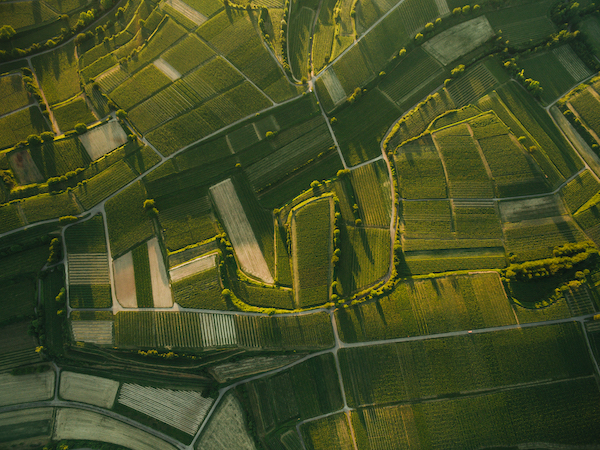Hyperspectral technology can capture the continuous electromagnetic spectrum of color and light through a lens and split it into different spectral lengths using a dispersive element such as a prism or a diffraction grating. While human eyes contain only three types of colour receptors (red, green and blue), a hyperspectral camera can divide the electromagnetic spectrum into thousands of small bands. It analyzes a wide spectrum of light and measures the spectrum of the light for each pixel in the image of a scene. This makes hyperspectral imaging one of the most information-rich sources of remote sensing data.
Though this technology was initially developed for military and space use, hyperspectral technology is now being applied in the field of agriculture. The lightweight hyperspectral imaging systems are mounted on fixed-wing aircraft or small UAVs (short for Unmanned Aerial Vehicles) to collect accurate data of large areas.
With hyperspectral imaging, the chemical and biological traits of plants and soil can be characterized. This is possible by analysing the reflective properties across a range of narrow spectral bands. Many potential issues that human eyes overlook are easily detected with these advanced inspection systems.
The information of the analysed object, which is provided by hyperspectral imaging, is abundant and streamlines the characterisation of biological complexity and various crop parameters. Spectroscopy can catch all kinds of variability (e.g., varieties of weather and soil types) and address any potential problems.
The hyperspectral systems are also efficient in monitoring the health of crops as well as their water and nutrient levels. They can even provide access to inaccessible and challenging areas such as swamps and mountain regions.
Basically, hyperspectral imaging has made precision agriculture, which requires more than simple RGB data, possible. Unlike traditional methodologies, hyperspectral imaging provides spectral content capable of detecting even tiny pigments of chlorophyll or minute colour changes on foliage.
Furthermore, many diseases can be detected with the help of hyperspectral imaging at an earlier stage. Citrus blight, which is a plant disease that destroys the vitality of trees and spreads throughout the grove, has been diagnosed in the past to prevent its escalation. The early signs of citrus blight include the secretion of a by-product on the surface of leaves. Initially, people used to climb the trees to inspect the leaves but, since the advent of hyperspectral systems, the problem can be seen from 300-400 meters above the crops using hyperspectral camera-mounted UAVs.
Hyperspectral imaging has also recently gained popularity as a non-destructive and quick method for seed quality and safety assessment. It can help detect viability, vigour, defect, disease, cleanliness and seed composition determination. Evaluation of the seed quality is critical in plant breeding and production, and hyperspectral imaging facilitates many routine inspection tasks.
Conclusion
At Universe Kogaku, we design and manufacture custom optical lenses to cater to your unique needs. If you want our lens application engineers to design optical precision lenses for your hyperspectral camera, you can call us today at 1-516-624-2444. We will assist you with all of your design considerations.